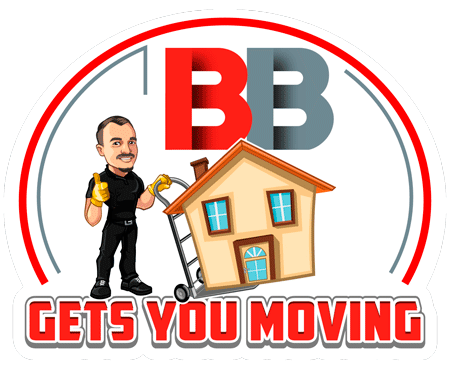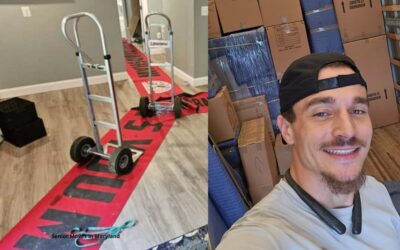Introduction
Relocating your business—whether a mid‑sized office, a law firm or a corporate HQ—in Maryland demands precision, planning and the right partner. When you search for office movers Maryland or commercial movers Maryland, you need more than trucks: you need strategies. In this guide you’ll learn how to audit your move, colour‑label your assets, prepare your IT for disconnect/reconnect, align with Certificates of Insurance (COIs) and building rules, schedule weekend or night moves, and complete a rigorous post‑move QA checklist to ensure zero downtime. Let’s dive in.
Office Movers Maryland – Pre‑Move Audit
The first step for any successful move is a thorough pre‑move audit. Engaging expert commercial movers Maryland early gives you the advantage of seeing what’s coming.
Why a pre‑move audit matters
You gain full visibility on what’s being moved, what stays, and what can be retired.
You identify facility constraints (e.g., loading docks, elevator hours, parking permits).
You provide your movers with an accurate scope—which helps them quote properly and plan efficiently.
For example, one provider specialising in Maryland office moves emphasises the value of “pre‑move planning … dedicated project manager … minimized downtime”. JK Moving Services+2Meyer, Inc.+2
What to include in your audit
Inventory of assets: desks, chairs, modular furniture, IT racks, servers, cabling, storage.
Floor‑plans of current and new location: mark which room, which floor, elevator specs.
IT/data infrastructure mapping: servers, switches, patch panels, fibre runs, workstations.
Building rules at origin & destination: hours for move‑in/out, loading dock restrictions, elevator usage, union labour rules, COI requirements.
Labeling/colour‑coding plan (we’ll detail this next).
Timeline for move: ideally with weekend/night slots to reduce disruption (we’ll cover later).
Risk assessment: what assets are mission‑critical, what must stay live, how long downtime can last.
Budgetary / insurance review: make sure your moving partner offers valuation coverage and that your business assets are insured.
Tips for working with your moving partner
Choose a mover with strong experience in Maryland commercial moves (e.g., they operate in Baltimore, Annapolis, Silver Spring). JK Moving Services+1
Ask for a dedicated project manager who will be your single point of contact.
Lock in your move window early, especially if you’re targeting a weekend or overnight slot when building access may be restricted.
Request a detailed scope of work with clear responsibilities (who disconnects the servers? Who reconnects?).
Include a walk‑through of both current and new site with your mover to capture constraints.
Office Movers Maryland – Colour‑Label System
Once the audit is done, implementing a colour‑label system ensures all furniture, IT equipment and boxes arrive at the right place in the new office.
What is a colour‑label system?
In essence, every piece of furniture, every workstation, every IT rack and box gets tagged with a colour‑coded label. The colour corresponds to a destination zone (e.g., Green = 2nd floor north wing; Red = 3rd floor east wing). This system avoids chaos on move‑day. Leading commercial movers in Maryland write about “tracking systems … chain‑of‑custody of items … labelling” as key capabilities. officemovers.com
How to design the system
Map out the new floor‑plan and define destination zones (rooms, departments, teams).
Assign unique colours (or colour + alpha code) for each zone.
Print or purchase durable labels that wrap around items (e.g., furniture legs, IT racks, boxes). Use colour, code, description (e.g., “Blue‑A12 -> Marketing Dept”).
Create a master chart (digital spreadsheet) mapping old location → asset ID → new zone colour/code → new position.
Tag IT equipment distinctly (e.g., Purple label for servers, Purple label also for patch panels) so your technology team knows exactly which items require disconnect/reconnect.
Ensure the moving crew receives a Legend sheet detailing all colours, codes and what they represent.
Why it matters
It dramatically speeds up unpacking and setup at destination—crew know exactly where each item goes.
It reduces error risk: no more “which floor did that cabinet go to?” or “which team gets this box?”.
It allows for accurate post‑move QA (did everything labelled Blue‑B go to room Blue‑B?).
It supports minimal downtime: less confusion means faster productivity.
Best practices
Use pre‑printed labels rather than handwritten (to reduce mis‑reads).
For modular furniture/disassembly‑reassembly: attach labels to each piece and track via the same colour code.
Export the master chart to PDF and distribute to relevant stakeholders (IT lead, facilities manager, mover’s project manager).
On move‑day, have a dedicated “label‑check” crew walk the origin and destination, verifying labels and codes match.
For sensitive/valuable assets (e.g., servers, medical lab equipment): add secondary identifiers (serial number, asset ID) alongside colour code.
Office Movers Maryland – IT Disconnect / Reconnect Plan
One of the most risk‑laden parts of any commercial move is moving the technology infrastructure. Your move must include a detailed plan for disconnecting, transporting, and reconnecting IT systems—so you hit zero or near‑zero downtime.
Why this is mission‑critical
When servers, switches, patch panels or workstations go offline unexpectedly, productivity halts—and costs escalate. Some leading Maryland movers emphasise “IT disconnect & reconnect” and “server & electronics relocation” as core services. Meyer, Inc.+1
Developing your IT plan
Inventory your IT assets: servers, racks, switches, UPS, fibre/copper terminations, workstations, printers, telecom hardware.
Map dependencies: which servers support which business applications; which workstations must be operational by Day 1.
Timing and sequencing: decide when to power‑down, move equipment, power‑up at new site. Weekend/night windows are ideal.
Disconnect checklist:
Label cables, ports and endpoints (e.g., “Switch‑2, Port 16, HR‑VLAN”).
Back‑up all data (verify integrity).
Gracefully shutdown servers, document states.
Disconnect non‑essential items early (printers, kiosks) to reduce move‑day load.
Transport protections: servers & racks should be moved in shock‑protected vehicles, ideally climate‑controlled. Some movers in Maryland provide “air ride electronic transport vehicles.” Von Paris
Reconnect at destination:
Pre‑label floor locations (per colour code system above) for server rooms, telecom closets, workstation clusters.
Re‑install UPS, racks, cables, patch panels.
Re‑power and test systems (network connectivity, applications, VoIP).
Have contingency rollback plans (e.g., temporary hosted services if on‐premises hardware is delayed).
Communications plan: ensure IT lead, facilities lead and moving partner sync on timing and responsibilities.
Day +1 support: expect some fine‑tuning (e.g., workstation prints, local drive mappings). Allocate resources for the first business day in new location.
Tips for zero downtime
Conduct a dry run if possible: move non‑critical equipment first (e.g., printers).
Stage equipment in the new facility ahead of move (if space allows) so that de‑installation at origin and installation at destination overlap.
Use off‑hours (weekend/night) for tech cut‑over; staff arrive Monday morning to full service.
Ask your mover for a service‑level agreement (SLA) or timeline guarantee for IT reconnect.
Office Movers Maryland – COIs & Building Rules
Relocating a business in Maryland often means navigating building logistics. You’ll need Certificates of Insurance (COIs), adhere to loading‑dock schedules, elevator reservations and possibly union labour rules.
Why building rules matter
Ignoring them can lead to delays, extra charges or even denied access to your new building’s loading dock on move‑day. For example, one Maryland mover emphasises tailored solutions for “historic and waterfront buildings… tight city access” in Baltimore. JK Moving Services
What you need to check
Certificate of Insurance (COI): most commercial building management require your moving company (and sometimes your business) to submit proof of insurance (liability, workers’ comp) before arrival. Confirm the format, recipients and deadlines.
Loading dock/garage access: confirm hours, fees, truck size limits, shuttle requirements, parking permits.
Elevator reservation: for multi‑floor moves you may need to reserve the freight or service elevator for a defined window (often weekends or nights).
Building protection requirements: e.g., floor runners, wall pads, trash disposal rules. Movers should include protection of both origin & destination building surfaces.
Union labour or certified crew requirements: Some older or downtown buildings may mandate union crews or specific contractors for rigging.
Security clearance / badging: Ensure your mover’s crew has building badges or clearance if required.
Dumpster/trash removal regulations: For office decommissioning (old furniture/disposal) check building rules and local regulations.
Noise or after‑hours policies: When doing weekend/night moves, often there are noise restrictions or special approvals needed.
Best practice checklist
At least 6‑8 weeks before move submit COI and proof of mover’s insurance to building management.
Walk through the destination loading zone (and origin) with your mover and building manager to capture constraints (map truck staging, elevator entry).
Document elevator reservation window in your master timeline (see downloadable timeline later).
Request building rules document (loading dock/garage) in writing and share with your project team and mover.
On move‑day ensure building protection is in place before trucks arrive (runner strips, corner guards).
Keep a site log during move‑day: arrival times, elevator logs, any building interruptions (for post‑move QA and invoicing).
Office Movers Maryland – Weekend/Night Moves for Zero Downtime
One of the strongest levers to minimize business disruption is scheduling your move during off‑hours: weekends, nights or early mornings.
Why off‑hours moves are powerful
Your staff are not actively using desks, workstations or network. The tech‑cutover window is more flexible.
Loading docks and elevators are less congested; truck access is easier.
Lower risk of interfering with client meetings, calls or public‑facing operations.
Enables faster setup so you can open fully on the next business day.
In fact, the mover in Baltimore highlights “Evening and weekend moves keep your business running.” JK Moving Services
How to plan for weekend/night slots
Lock in your move‑window early: coordinate with building, IT staff, and moving partner. Confirm whether additional crew or overtime rates apply.
Communicate to stakeholders: warn your team of limited access during the slot, define who will be onsite (IT, facilities, moving liaison).
Prepare the site beforehand: label all items, divide packing tasks so that by Friday close of business your moving crew can start loading early evening.
Staging the destination: if possible, coordinate with building access to have the new site prepped (e.g., empty, cleaned, floor plans marked) before trucks arrive.
Night of move:
Load at origin, transport, unload at destination.
IT cut‑over begins (depending on complexity); aim to have core business systems live overnight so that Monday morning you’re ready.
Furniture, cubicles and chairs set up concurrently so workstations are move‑in ready.
Monday morning hand‑off: Have a walk‑through with the mover and your team to verify critical workstations are active, phones working, staff can log in, printers online.
Contingency plan: Some movers recommend a “back‑up” service for essential workstations in case something goes wrong—e.g., temporary hot‑desks at destination.
Drawbacks and how to mitigate them
Overtime costs: Night/weekend moves may carry premium rates. Mitigate by negotiating fixed move‑window fees.
Worker fatigue: Ensure the crew has rested personnel; ask for experienced night‑crew to avoid mistakes.
IT staff availability: Ensure your IT team (and any external vendors) are scheduled during the move‑window (often non‑standard hours).
Limited support services: Some building services (e.g., HVAC, janitorial) may be limited overnight—check beforehand.
Office Movers Maryland – Post‑Move QA Checklist
Once the actual move is over, your job isn’t done. A robust post‑move QA (quality assurance) ensures everything is in place and operational.
Key QA items
Zone‑by‑zone walkthrough: Using your colour‑label system, verify each area (e.g., Blue, Red, Green) has all items delivered, positioned correctly and turned on.
IT systems check: Confirm servers, workstations, printers, phone systems, network connectivity and applications are working as expected.
Furniture & module inspection: Ensure desks, chairs, cubicles are correctly assembled, leveled, and free of damage.
Asset inventory reconciliation: Match pre‑move inventory to post‑move: items moved, items retired, missing/misplaced items.
Damage or short‑fall survey: Note any damaged items or service short‑falls (e.g., trucking delays, building damage) for claim resolution.
Staff feedback loop: Solicit quick feedback from staff (first 1‑2 business days) on workstation readiness, comfort, equipment issues.
Sign‑off and close‑out report: You and the mover should sign off on completion, document any punch‑list items and schedule any remaining tasks (e.g., old site clean‑up, storage retrieval).
Financial reconciliation: Ensure final invoicing matches agreed‑scope, overtime hours, additional services and that extras are justified.
Future lessons learned: Conduct a short post‑mortem meeting: what went well? What could be improved for next time? Document for future reference.
Why this step is essential
Even with perfect planning, things rarely go exactly to plan. The QA process means you catch issues early while your mover is still on‑site (and accountable). It helps you comply with internal governance, ensures your team is productive from Day 1, and protects your business from hidden costs or asset losses.
Downloadable Timeline (Free Resource)
Below is a suggested high‑level timeline for your move. You can adapt this in Excel or Google Sheets and use it as your master plan.
| Timeframe | Task | Responsible Party |
|---|---|---|
| 8‑12 Weeks Out | Conduct pre‑move audit; select mover; begin building constraints review | Facilities/Operations |
| 6‑8 Weeks Out | Finalise floor‑plan; design colour‑label system; submit COI/building documents | Project Manager/Mover |
| 4‑6 Weeks Out | Inventory IT assets; map dependencies; review network/server cut‑over plan | IT Lead |
| 2‑4 Weeks Out | Reserve loading dock/elevator; communicate move‑window; deliver labels to departments | Mover/Facilities |
| 1 Week Out | Pack non‑critical items; tag furniture; verify IT backup; review contingency plan | All Stakeholders |
| Move Weekend/Night | Execute move: origin load → transport → destination unload; IT cut‑over; furniture setup | Mover + IT + Facilities |
| Monday (Business Day) | Staff report to new location; conduct walkthrough; fix punch‑list; ensure productivity | All Teams |
| 1‑2 Weeks After | Post‑move QA: inventory reconciliation; staff feedback; close‑out report | Project Manager |
Download this table as a PDF and insert it into your move‑package.
Internal Links and Further Reading
For dedicated packing guidance see our article on “Packing for Business Relocations” (link internally)
If you anticipate a very tight timeline, check our guide on “Same‑Day Commercial Moves” (link internally)
FAQs
What is the ideal lead‑time for hiring office movers Maryland?
It’s best to engage your commercial moving vendor at least 6–8 weeks in advance for standard office moves in Maryland. For larger relocations (hundreds of employees, complex IT), you should allow 12+ weeks for planning.
How can we minimise downtime during our move in Maryland?
Focus on weekend or night scheduling, robust IT disconnect/reconnect planning, and pre‑staging furniture where possible. The colour‑label system also accelerates setup so your team can log in quickly.
Do we need to worry about building rules for moves in downtown Baltimore or Bethesda?
Yes — many buildings in Maryland (especially downtown Baltimore, Bethesda or Silver Spring) enforce elevator reservations, loading‑dock restrictions, truck size limits and COI submission. One mover cites “tight city access” as a major factor in downtown Baltimore relocations. JK Moving Services
What happens if our IT cut‑over is delayed?
Have a contingency plan: e.g., remote access to critical systems, temporary workstations, or business‑critical staff working from a satellite location until cut‑over is complete. Ensure your mover and IT vendor commit to a timeline.
Who is responsible for insurance and asset protection during the move?
You should confirm that the moving vendor holds liability and cargo coverage; you should also verify their valuation limits and whether you need to purchase additional coverage. Request a Certificate of Insurance (COI) from the mover and transfer it to your building manager if required.
Is it better to move all furniture and equipment in one weekend or phased over several nights?
It depends on your business needs. A full‑weekend move reduces total downtime but may require more crew and higher cost. A phased approach (e.g., department‑by‑department) may spread impact more smoothly but prolongs transition. A good mover will help you weigh cost vs. disruption and build the optimal schedule.
Conclusion
Relocating your business within Maryland—from Annapolis to Baltimore, from Bethesda to Silver Spring—does not have to be chaotic or disruptive. By engaging experienced office movers Maryland and commercial movers Maryland, conducting a detailed audit, deploying a colour‑label system, planning your IT cut‑over meticulously, ensuring COIs and building compliance, scheduling weekend/night moves, and executing a rigorous post‑move QA, you set the stage for a smooth transition with zero downtime. When done well, your team walks into the new space Monday morning ready to go—with minimal disruption, minimal cost and maximum momentum.





0 Comments